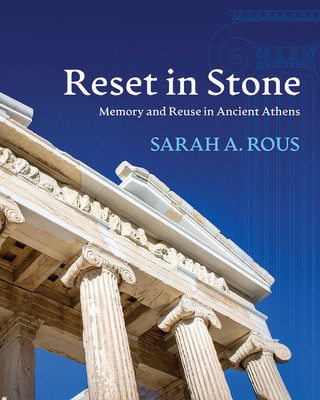
- We will send in 10–14 business days.
- Author: Sarah A Rous
- Publisher: University of Wisconsin Press
- ISBN-10: 0299322807
- ISBN-13: 9780299322809
- Format: 20.8 x 25.7 x 3.1 cm, hardcover
- Language: English
- SAVE -10% with code: EXTRA
Reviews
Description
Ancient Athenians were known to reuse stone artifacts, architectural blocks, and public statuary in the creation of new buildings and monuments. However, these construction decisions went beyond mere pragmatics: they were often a visible mechanism for shaping communal memory, especially in periods of profound and challenging social or political transformation.
Sarah Rous develops the concept of upcycling to refer to this meaningful reclamation, the intentionality of reemploying each particular object for its specific new context. The upcycling approach drives innovative reinterpretations of diverse cases, including column drums built into fortification walls, recut inscriptions, monument renovations, and the wholesale relocation of buildings. Using archaeological, literary, and epigraphic evidence from more than eight centuries of Athenian history, Rous's investigation connects seemingly disparate instances of the reuse of building materials. She focuses on agency, offering an alternative to the traditional discourse on spolia. Reset in Stone illuminates a vital practice through which Athenians shaped social memory in the physical realm, literally building their past into their city.
EXTRA 10 % discount with code: EXTRA
The promotion ends in 17d.02:24:49
The discount code is valid when purchasing from 10 €. Discounts do not stack.
- Author: Sarah A Rous
- Publisher: University of Wisconsin Press
- ISBN-10: 0299322807
- ISBN-13: 9780299322809
- Format: 20.8 x 25.7 x 3.1 cm, hardcover
- Language: English English
Ancient Athenians were known to reuse stone artifacts, architectural blocks, and public statuary in the creation of new buildings and monuments. However, these construction decisions went beyond mere pragmatics: they were often a visible mechanism for shaping communal memory, especially in periods of profound and challenging social or political transformation.
Sarah Rous develops the concept of upcycling to refer to this meaningful reclamation, the intentionality of reemploying each particular object for its specific new context. The upcycling approach drives innovative reinterpretations of diverse cases, including column drums built into fortification walls, recut inscriptions, monument renovations, and the wholesale relocation of buildings. Using archaeological, literary, and epigraphic evidence from more than eight centuries of Athenian history, Rous's investigation connects seemingly disparate instances of the reuse of building materials. She focuses on agency, offering an alternative to the traditional discourse on spolia. Reset in Stone illuminates a vital practice through which Athenians shaped social memory in the physical realm, literally building their past into their city.


Reviews